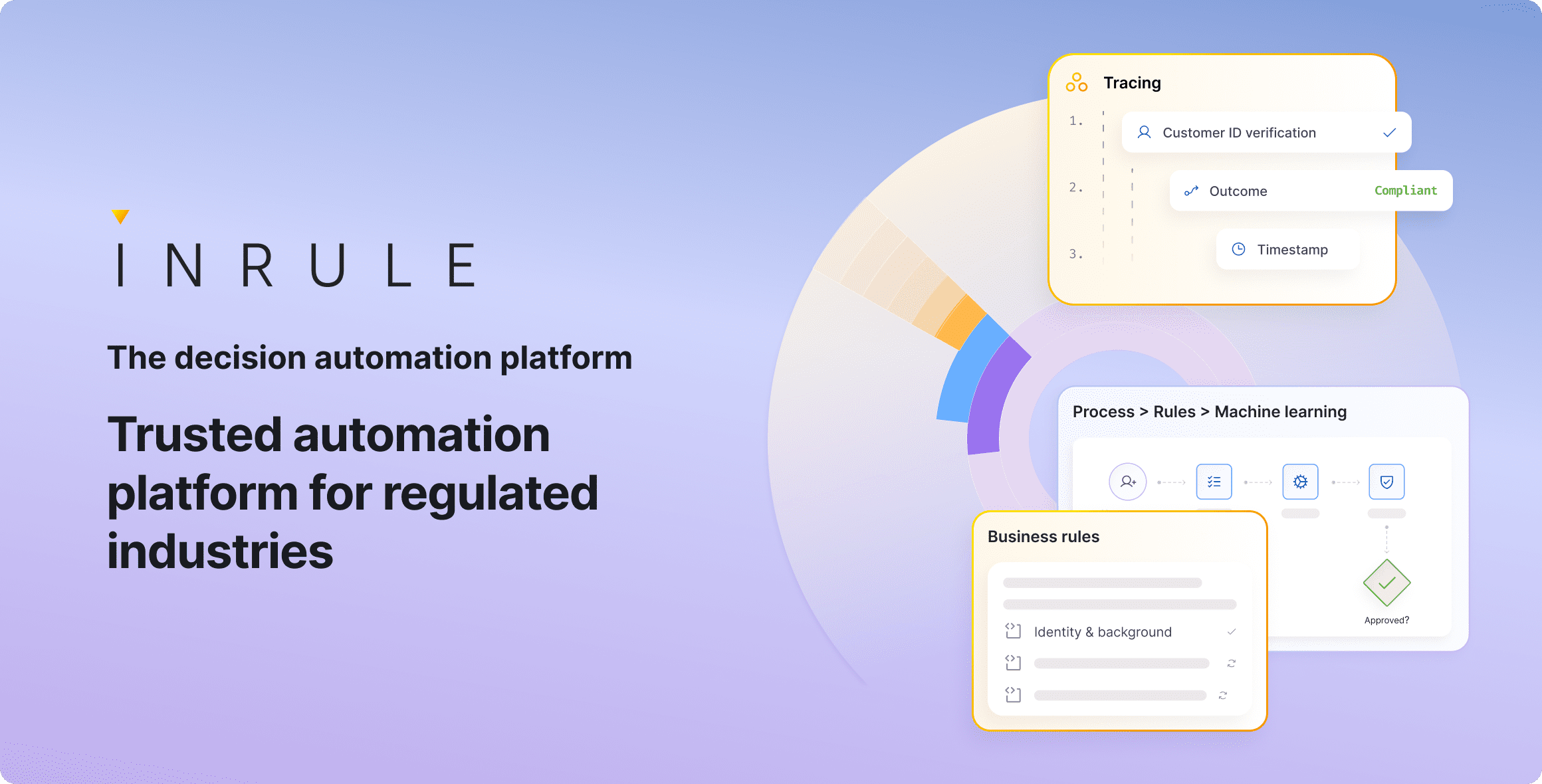Decision Modeling
- Home
- Decision Modeling
Decision modeling
Decision modeling externalizes rules from code for clarity, compliance, collaboration, and continuous testing. Vocabulary ensures rules reflect business terms.

Model decisions you can trust
Rules are often buried in code, making them hard to update, trace, or explain. This creates costly errors and compliance risk. InRule externalizes decisions, provides Vocabulary for clarity, and delivers visual, auditable models so rules and policies are accurate, transparent, and easily maintained.

Externalized rules
Separate rules from application code for clarity and maintainability.

Business vocabulary
Use natural-language Vocabulary so rules reflect business terms.

Traceability
Capture decision paths and rule history to support audits and compliance.
By utilizing the InRule rule authoring tools across our development and business departments we have been able to eliminate a lot of ambiguity between what the business users want and what the developers deliver.
– VP Information Systems, Residential Earthquake Insurance Company (insurance)
Decision modeling in practice

Define the business intent
Capture goals, constraints, and success measures — the why behind the rules.

Design the solution
Turn intent into a logical and data-ready blueprint for how the rules will function.

Build and validate
Develop and confirm that the rule logic behaves correctly and aligns with business expectations.

Deploy and measure
Release to production, ensure operational success, and verify business impact.

Deploy and measure
Release to production, ensure operational success, and verify business impact.

Optimize continuously
Refine performance and adapt to evolving business needs.

Capture requirements
Structure rules and logic you can trust
Externalized rules keep logic consistent across systems.
Strong typing, validation, versioning, and vocabulary templates ensure precision. Natural-language modeling aligns policy changes to business terms as they evolve.
Meet regulations
Explain decisions in regulated industries
Decision tables and visual traces show how outcomes were reached.
Every rule, change, and outcome is documented with version history and audit trails. Visual tracing and decision tables support stakeholder review, while APIs provide programmatic access for compliance.


Capture requirements
Model rules with InRule Vocabulary
Business language modeling ensures clarity and reduces errors.
InRule Vocabulary lets business users create and manage rules in the language of the business, eliminating translation gaps between analysts and developers. This reduces misinterpretation, speeds adoption, and ensures requirements are captured accurately from the start.
Understand rule exceptions
Visualize logic for collaboration across teams
A shared canvas reduces misinterpretation and speeds alignment.
A shared canvas reduces misinterpretation and speeds alignment. Analysts and engineers collaborate directly on the same models, ensuring exceptions are caught early, approvals flow smoothly, and decision logic is always ready for regulatory audits.


Rule quality
Test scenarios before deployment
Simulation and regression testing validate changes before go live.
Teams model impact, catch errors early, and deploy with confidence that rules behave as intended in production.
Resources
Explore the platform in action
Explore real-world examples of how organizations use InRule to unify rules, processes, and data. Read articles, watch webinars, and access expert insights on building transparent, adaptable automation.


